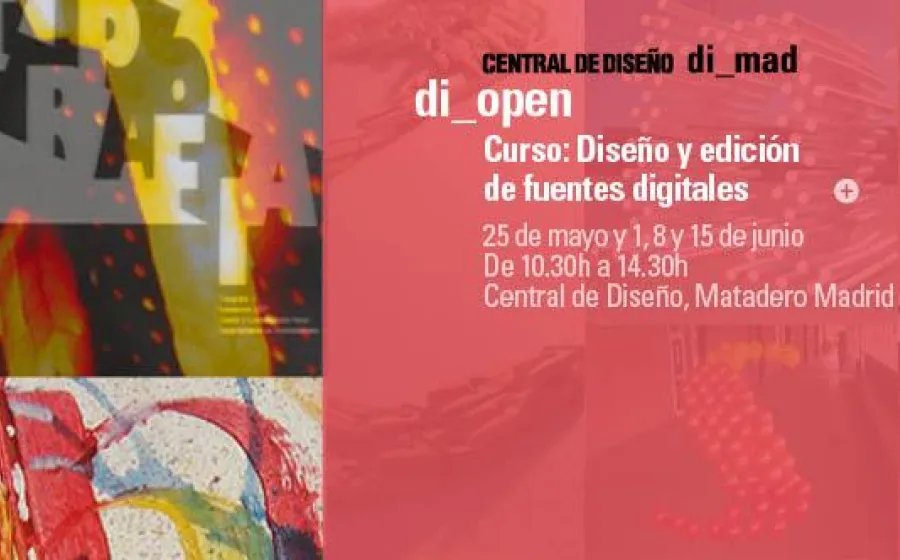DI_OPEN: CREATING DIGITAL SOURCES
Featuring Oscar Alcaide
Date
25 May
15 June 2013
Venue
Central de diseño
Price
423,5€ DIMAD members/ 605€ non-members
Institution
Central de Diseño
All typography, even the most modern digital characters designed with the aid of a computer, are based on forms of handwriting. In the link between a letter that has been written, painted, or sculpted and printed characters, as well as the development of the Latin alphabet, the creative and innovative contribution made by calligraphers, scribes, and designers throughout history is particularly notable.
Linguistic signs belong to graphic design and visual communication. Knowledge of the different typographic families, the history of the evolution of the Latin alphabet, its form and function, as well as the correct articulation of one sign and another, and its spatial integration, constitue an unavoidable part of a graphic designer's education.
In the end of the 20th century and the beginning of the current century, the media and long-distance communication technology began to create a great change in people's habits. As new innovations cropped up, the limits of its professional reach became less defined and the graphic designer had to adapt, stay abreast of everything, and expand his range of knowledge to gain access to an increasingly competitive job market.
The major labor crisis that Spain is facing right now forces us to imagine and create new working and commercial alternatives. Digital font design (font-software) is an activity that can be developed with a minimal effort in infrastructure and with minimal investment. Commercialization can be channeled through an online store to an international market clamoring for new ideas.
General objectives
• Developing intellectual, visual, technical, and social skills through the study of typography and the design of new alphabets and, additionally, through the use of potential of new technological tools.
• Providing high-quality instruction, with information and research of theoretical and practical aspects related to typography, integrated into an historical-cultural medium in which it was created, as well as the function that these new offerings are designed to have.
• Providing incentives for creativity through experimentation, personal independent work, and work done in cooperation with others.
• Providing a means of learning where participants not only find information, but can additionally offer stimulus to develop their own interests in the field of typography.
• Providing a firm ample base for the principles and methods of font design.
For more information and to see the program, click here.
Linguistic signs belong to graphic design and visual communication. Knowledge of the different typographic families, the history of the evolution of the Latin alphabet, its form and function, as well as the correct articulation of one sign and another, and its spatial integration, constitue an unavoidable part of a graphic designer's education.
In the end of the 20th century and the beginning of the current century, the media and long-distance communication technology began to create a great change in people's habits. As new innovations cropped up, the limits of its professional reach became less defined and the graphic designer had to adapt, stay abreast of everything, and expand his range of knowledge to gain access to an increasingly competitive job market.
The major labor crisis that Spain is facing right now forces us to imagine and create new working and commercial alternatives. Digital font design (font-software) is an activity that can be developed with a minimal effort in infrastructure and with minimal investment. Commercialization can be channeled through an online store to an international market clamoring for new ideas.
General objectives
• Developing intellectual, visual, technical, and social skills through the study of typography and the design of new alphabets and, additionally, through the use of potential of new technological tools.
• Providing high-quality instruction, with information and research of theoretical and practical aspects related to typography, integrated into an historical-cultural medium in which it was created, as well as the function that these new offerings are designed to have.
• Providing incentives for creativity through experimentation, personal independent work, and work done in cooperation with others.
• Providing a means of learning where participants not only find information, but can additionally offer stimulus to develop their own interests in the field of typography.
• Providing a firm ample base for the principles and methods of font design.
For more information and to see the program, click here.

